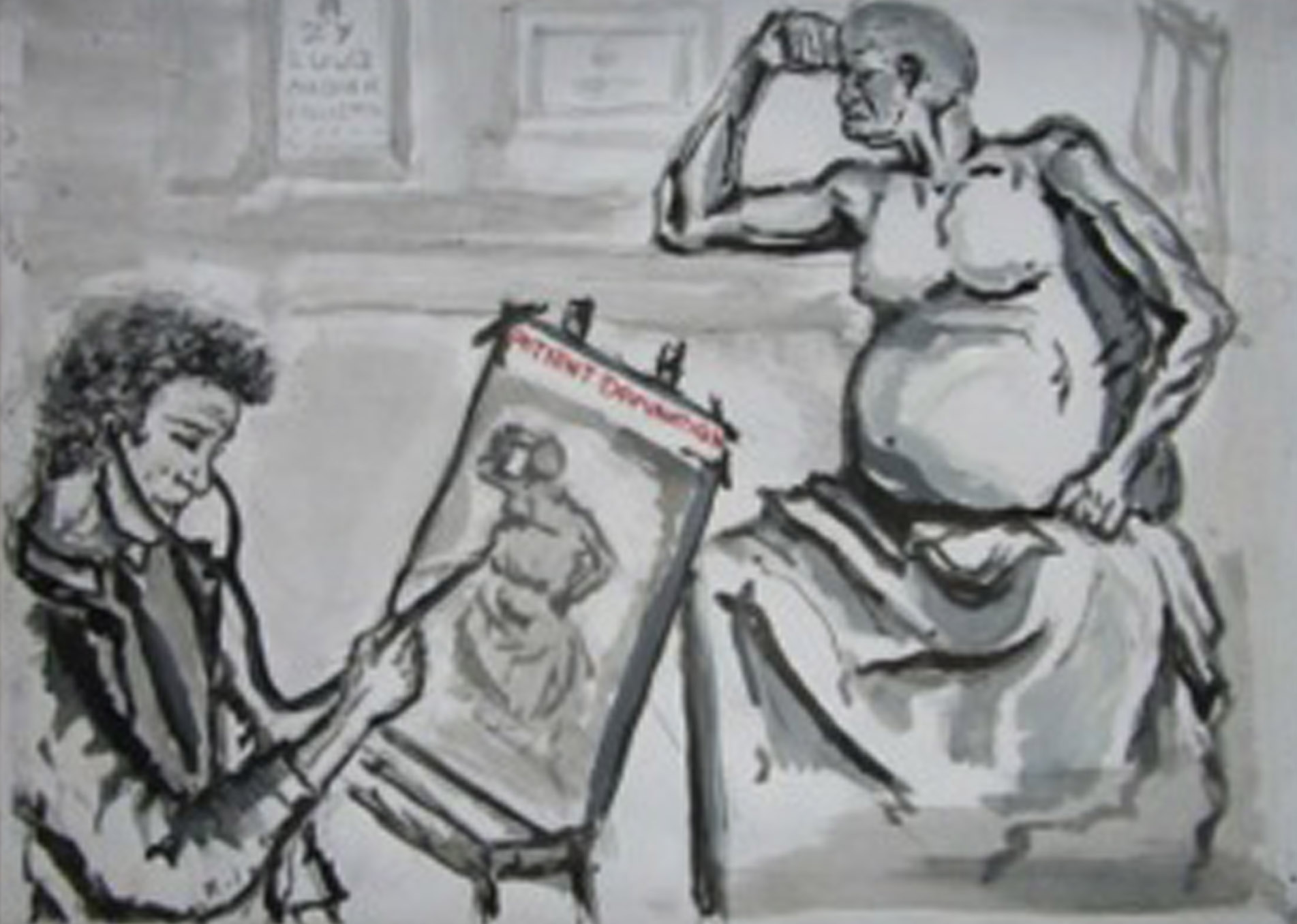A Patient Examination
When I was trying to work out what to produce for my creative piece I kept coming back to an idea that had stuck in my head from the start of this SSC in Creative Arts and had been carried on through in a lot of group discussions; the idea that doctors’ ways of looking at things can become too clinical and scientific. I think one of the purposes of the Creative Arts course is to engage us in the arts in an attempt to open our minds beyond the science in an attempt to enhance the way we look at patients and the world around us.- -‘I like my creative pieces to be quite dramatic but also quite clear in the point I am trying to make.
As much as I love abstraction and taking your own personal meaning from a piece, I also quite want people to look at artwork and be able to instantly relate. This painting shows a patient examination which is quite different to a standard clinical examination. The doctor is producing a painting or life drawing of his patient to demonstrate a new or enhanced way of looking at things. I have tried to emphasize this by combining the stethoscope and paintbrush. The stethoscope is the most iconic and fundamental tool for medical examination and the brush is synonymous with art and creativity. Joining these two things is a comment on how art and science go hand in hand. I am trying to show how important it is not just to look at the patient as a biological, broken machine but as an entirely unique and individual human being with an extensive collection of emotions and circumstances. The way that we are trained to look at people and situations is narrow and constricted and combined with a fast-paced and challenging career, our ability to look at the human intricacies of the people we are trying to help is drowned by procedure and textbook knowledge.
‘The attention to detail of an artist to his subject can be mirrored by a good doctor’s attention to their patients. I sketched out several different compositions for the painting but the layout I was left with was the only one that showed clearly that the person painting was a doctor. I chose a figure for the patient that has features similar to a sculpture and sitting in a position as if he is posing for the painting. The heavy black and white tones emphasize the two figures with a touch of red to highlight the title of this painting ‘patient examination’ – as the doctor looks at the patient from a completely different angle.
Creative Arts for Health, 2012

Often doctors can get carried away with treating just the disease instead of treating the patient. This art piece clearly expresses how doctors should treat every patient as a unique person with individual needs. Looking at every patient through different sets of eyes allows not only the individual’s ideas, concerns and expectations to be addressed, but also for the patient to feel the support and empathy.
After a substantial amount of time as a practising and licensed doctor, I believe it becomes easy to look at people, sorry, patients – as exactly that. That was a purposeful error to demonstrate how we slowly detach ourselves from the ones that we treat, identifying them collectively as a ‘patient’; we begin to see them as dislocated shoulder, early signs of dementia, rheumatoid arthritis and acute bowel obstruction. We translate their arm hurting when it is raised to anatomical and medical jargon like abduction of the left forearm thereby being able to identify what tendon has been strained and offer treatment. Does this detachment enable us to stay focused and work with our head and not our emotions? I mean, there is a reason why doctors don’t treat family members. However, isn’t it the most compassionate and empathetic doctors, take for one the likes of Sommelweis, whose simple antiseptic hand washing technique was widely unpublished and ignored until fifty years after his death that contributed a lengthy amount towards medicine? I believe, that we must always step back and look at patients as individuals, creative works of art because each human is intrinsically different and whether the diagnosis is the same, the outcome, healing process and reaction to medication differs, and that is what this painting so clearly depicts.
I like the thought that has gone into this piece, both in terms of small intricate details (such as the use of a ‘fused’ stethoscope and paintbrush) and in terms of the full story that the piece is meant to tell and communicate. This piece is a good reminder of the importance of a personal touch and the inclusion of emotions and feelings in the practice of medicine. While a sound scientific understanding is of course essential to successful medical care, a lack of an emotional understanding (both for the patient and the healthcare practitioner) will result in a less effective treatment of one’s patients.